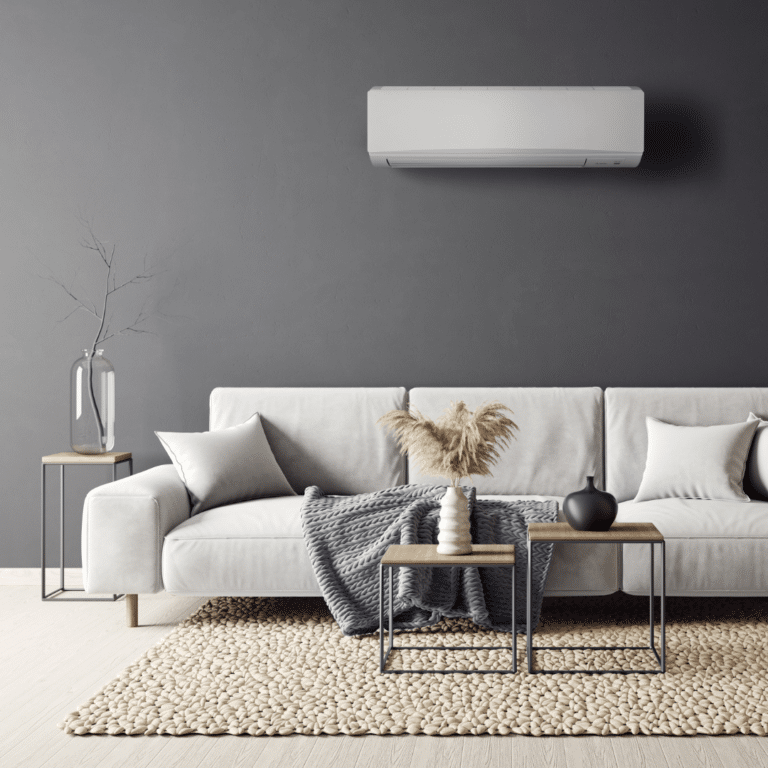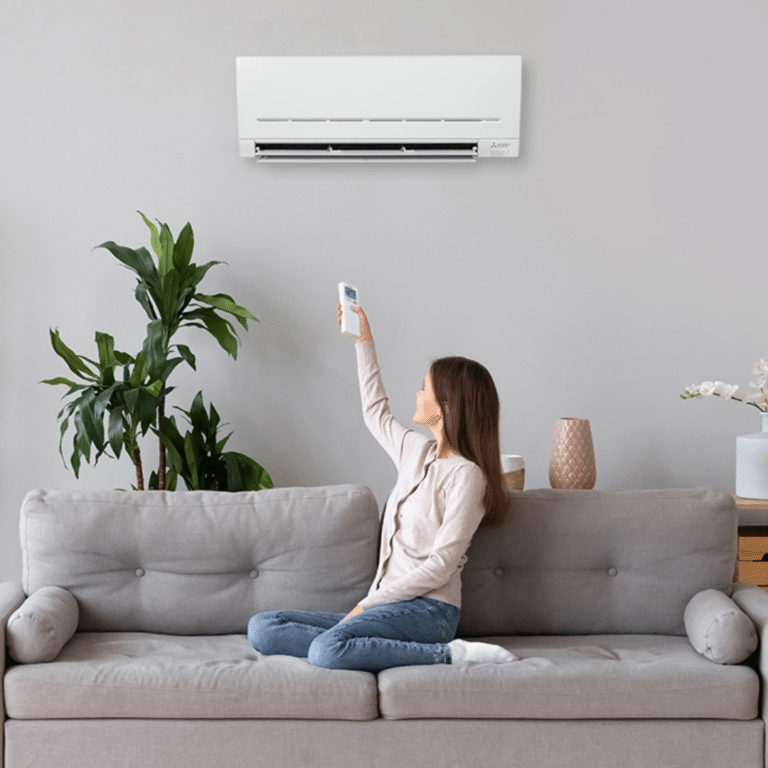When the temperatures start to change, it’s natural to start thinking about your air conditioner’s heating or cooling capabilities. Nobody wants to find themselves stuck in a hot and humid room during summer or a cold building in the middle of winter.
Health concerns can also be a significant consideration–especially if your air conditioning unit is not equipped with anti-allergen filtration systems. Without the capacity to filter additional pollutants out, those with health and safety regulation concerns in a commercial environment or individuals who suffer from asthma may need to take special care in observing the state of their unit.
Although upgrades can be expensive, choosing to replace your old air conditioner may be the most cost-effective solution to issues you’re experiencing.
If you’re unsure about whether it’s time to upgrade, there are vital signs you can watch out for.
6 Signs it’s time to upgrade your air conditioner
1. Age of your air conditioner:
The typical lifespan of an air conditioner is around ten years. This includes regular maintenance, filter cleaning, and filter replacement–a lack of consistent servicing could easily reduce this lifespan.
From a purely aesthetic perspective, older indoor units may discolour with time, and they may be “dated” compared to the newer systems available today.
2. High energy bills:
Newer air conditioning units are more energy-efficient than older ones, which can result in lower energy bills. It could be a contributing factor if your energy bills are higher than expected during the quarter when you use your air conditioner the most. An older or malfunctioning air conditioning unit may consume more energy to cool or warm your home, leading to higher energy bills.
New model Mitsubishi Electric air conditioners, thanks to advancements such as inverter technology, can achieve up to 47% energy savings when comparing our current model, MSZ-AP Series, with an equivalent older model from 2002. With the rising cost of electricity, it’s worth considering how you can save energy.
3. Frequent breakdowns and repairs:
One of the most obvious signs that you need to replace your air conditioner is that it breaks down frequently. Whether it simply turns itself off after extended use, occasionally refuses to power on, or you find yourself needing to buy new parts frequently, it may be time to upgrade.
My air conditioner isn’t broken yet, why do I need to replace it?
Even though your unit may still be functioning correctly, most air conditioners have a lifespan of approximately ten years. Considering an upgrade could save you from future discomfort, potentially high utility bills and repeated repair or replacement costs. If your air conditioning system is nearing the end of its useful life or you notice a dip in its performance, it may be time to choose a replacement.
How do you decide between repair or replacement?
Frequent breakdowns, a drop in performance, and the need for repairs can be a clear indicator that your air conditioner is nearing the end of its useful life. Compare the cost of ongoing repairs to the investment in a new unit with a new warranty over the long run.
4. Your property is never warm or cool enough:
The last thing anyone wants to experience when using their air conditioner is a blast of warm air during summer or cool air in winter. If your air conditioner is struggling to keep a consistent temperature throughout your building, it could be a sign that one or more of your units are no longer running effectively.
Why do I need to get my air conditioner serviced?
If it has been a while since your last service by a qualified technician, consider booking one. There are some common signs that it’s time to service your air conditioner.
Servicing your unit regularly can ensure it stays in optimal working condition throughout its lifespan. The technician can also advise on the state of your system and if a replacement is recommended.
5. Unpleasant odours and noise:
Sometimes, an air conditioner may emit an unpleasant or unusual smell when in use. Likewise, it may begin making odd and concerning noises. This is usually indicative of a more serious problem that should be investigated by a qualified service technician immediately. Make sure you turn the unit in question off and refrain from using it while following the recommended advice of your service technician to avoid additional issues.
6. Poor indoor air quality:
If you have noticed a decrease in indoor air quality, such as more allergens or dust, it may indicate that your air conditioning unit is struggling to work effectively.
The air conditioner model will help you determine the type of filters installed. Most air conditioning units come with a standard filter and may have optional filter upgrades, although these may differ between different models.
Some filter models are washable and have a long lifetime. However, after several years, it is worth checking whether the filters need to be replaced. The Split Systems Filters flyer provides more information on the filters in Mitsubishi Electric split system air conditioners.
Benefits of Updating Your Air Conditioner
1. Energy waste reduction and cost efficiency:
Newer air conditioners are built to be more energy-efficient than their older models. Technology, such as Inverter compressors, improved fan motors, and intelligent controls, improves running efficiency.
In addition, Wi-Fi functionality and smart technology integration can also allow you to take greater control over your unit’s usage. Reducing energy waste and unnecessary operation of your air conditioning unit allows you to dictate exactly how your unit is used and its potential effects on your power bill.
Mitsubishi Electric embraces this approach to enhanced air conditioning management through our advanced systems and Wi-Fi control2. This allows you to take command of your unit’s energy usage while enjoying ideal comfort.
2. Climate control anywhere, anytime:
With Wi-Fi control, you can use the internet to control your air conditioner from anywhere at any time. No more wondering if you have forgotten to turn the air conditioner off after going out. Wi-Fi control also lets you pre-cool a hot home during summer before returning.
Mitsubishi Electric split system air conditioners and ducted air conditioning systems have Wi-Fi control capabilities. This innovative technology connects your Mitsubishi Electric air conditioner to your smartphone, tablet or online account, giving you the freedom to fully control each unit on the go via an internet connection from anywhere in the world. An optional Wi-Fi adapter is required per unit, except the AP25-80, EF, KW & LN Series models with built-in capabilities. It requires an internet connection and the Wi-Fi Control App to be downloaded on your smartphone or tablet with the latest operating system available. Your local dealer will be able to assist with more information.
3. Increased heating or cooling performance:
Replacing your old air conditioner with a new unit can improve the heating or cooling effectiveness in your space. Older air conditioners may have trouble reaching or maintaining the desired temperature. Mitsubishi Electric engineers air conditioners to maintain an optimal temperature climate and ensure they offer both efficiency and comfort whenever needed.
4. Essential property feature:
While an integrated air conditioning system represents a large initial investment, it provides both immediate comfort and value for a property. Ducted air conditioning is frequently of interest to prospective homeowners or property investors, who consider it a ” must-have” when comparing properties.
5. Reduced noise levels:
Updated Mitsubishi Electric models contain more advanced technology designed to decrease the noise levels of both indoor and outdoor units. If your current unit makes it difficult to hear important conversations or your television, upgrading your air conditioner can minimise this issue.
All Mitsubishi Electric wall-mounted air conditioners feature a “Quiet Mode,” ensuring quiet operation, allowing you to sleep, read and relax in peace. You will hardly notice the 18 dBA whisper of the MSZ-AP25 in heating mode when you turn it to quiet mode to enjoy a comfortable indoor environment.
Choosing the Right Air Conditioner
If you’re thinking of upgrading your existing air conditioner, it’s essential first to consider the different types and styles available. Air conditioners come in a range of different types, such as wall mounted, floor console or ducted, all designed to suit different building and room requirements.
The other essential thing to consider when selecting the right air conditioner is matching the capacity of the unit, measured in kW, to your space. If the unit’s kW capacity is too small, it will constantly run at full speed and use the maximum power. If the unit’s kW capacity is too big, it will reach the temperature too quickly, constantly turn itself off, and not operate efficiently.
The selection process can often take time, and you may wish to discuss which type and capacity of Mitsubishi Electric air conditioner is right for your property with a professional. Find your nearest stockist and speak to an air conditioning specialist to help you make an informed choice.
Types of air conditioners:
Achieving optimal comfort and efficiency is accomplished by choosing the correct air conditioner for the needs of occupants and your property. Below is a selection of our Mitsubishi Electric air conditioner range and the areas they are often suited for:
- Wall mounted: The most common type of air conditioning system, often referred to just as a ‘split system’. The indoor unit is installed high on a wall with remote control operation. Available in various styles, capacities and colour options, can provide comfort from a single room to a larger living space.
- Multi-split: Similar to split systems, it connects one outdoor unit to multiple indoor units. The larger the outdoor unit’s capacity, the more indoor units you can connect. You can even mix and match different indoor unit types, such as wall-mounted and floor console units, to one outdoor unit.
- Ducted: This option offers a comprehensive solution for cooling and heating the entire property through concealed ductwork and is suitable for larger buildings.
- Floor console: Perfect for areas where wall space is limited, floor console units provide effective heating and cooling while seamlessly blending into the room’s decor.
- Ceiling cassette: Designed to be mounted flush with the ceiling and distribute air evenly throughout large rooms or open spaces.
- Bulkhead: Ideal for rooms with limited or no wall space, bulkhead units are discreetly installed in a ceiling bulkhead or above a wardrobe with a short straight duct to supply the conditioned air via a side wall diffuser or grille.
Explore the full range of Mitsubishi Electric air conditioners.
Key considerations:
Whether your space requires the best heating and cooling performance, increased energy efficiency or has a particular size installation requirement, picking your upgrade requires careful consideration.
- Reverse-cycle vs. Cooling Only: Reverse-cycle air conditioners provide both cooling and heating, making them a versatile choice for areas with varying climates. Mitsubishi Electric cooling-only wall-mounted split air conditioner series availability is limited to Northern Australia (Northern Western Australia, Northern Territory and Northern Queensland).
- Sizing: To ensure efficient operation and comfort, it’s vital to choose an air conditioner with the right capacity for your space. A specialist air conditioning Dealer can provide a “heat load calculation” to determine the kW capacity you need.
- Energy Efficiency: Opt for air conditioners with high energy star ratings. The number of stars on the energy rating label helps you compare the efficiency of one air conditioner to another of the same type and capacity.
- Special Features: Fan speeds, operating modes, Wi-Fi control, and noise levels can enhance comfort and convenience.
Ensure installation is performed by a licensed professional for safety and efficiency. Your installer must have the relevant Refrigerant Handling Licence.
Embracing the Future of Comfort
Ultimately, the decision to update your air conditioner will depend on your individual circumstances and needs. Opting for a newer Mitsubishi Electric model can not only reduce noise (both inside and outside) and improve overall performance and energy efficiency, but they often come equipped with additional features that can increase ease of operation and indoor comfort levels. Recognising signs of wear allows you to make a timely decision that enhances your property’s comfort.
It is always recommended to consult with a qualified service technician to assess the condition of your current unit and determine whether an update is necessary.
1 Up to 47% energy-saving calculations can be found at https://www.mitsubishielectric.com.au/promotions/
2 Optional Wi-Fi adapter required per unit, unless built-in. Excludes models AP25-80, EF, KW & LN.



